Written By, Dr Hemant K Panda1 || Annjaan Daash2
1Professor and Principal, Regional College of Management, Bhubaneswar, India
2Head Placement, Regional College of Management, Bhubaneswar, India
ABSTRACT
As corporates proceed to develop new product brands, changing market and consumer situations throw up the need for re-looking at age-old branding strategies and corporate beliefs. Increased competition, more informed consumers, changing global scenarios, and economic conditions have brought into focus the need for developing strategies to increase value for the consumer, thereby increasing organizational profitability.
Organizational investments in corporate brand identities have increased manifold over recent years. Realizing the value of corporate brand identities has made big corporations make sizeable investments to enhance their brand images. Allowing new product brands to contribute to these brand images now appears to be important.
At the same time, when corporations is strengthening their brand images, individual product brands seem to lose out when consumers fail to link the individual products and the corporate brand images. Organizations will gain from recognizing the consumer as a significant dimension while formulating brand management strategies.
This paper attempts to study the ability of individual consumers to associate a product or service brand with the corporate associated with the same, thereby stressing the need to build brand awareness. This was done by conducting a study using a product brand pool as a research instrument, where consumers were asked to classify the brand on the basis of the corporate producing those brands. The result where further used to calculate a consumer brand association score.
This score was considered as representative of the consumer’s state of relationship with the organization and was used to create consumer clusters for segmentations to aid purposeful consumer targeting.
KEYWORDS: Brand Management, Clustering, Consumer Profiling, Problem Recognition, Styles and Attributes, Market Segmentation
INTRODUCTION
Organizations are witnessing a shift from product branding to corporate branding (Aaker, 1996; Keller, 2003). The general aim of corporate branding is to build a sustainable bond between the branded company and its customers through a clear value proposition (Schultz and de Chernatony, 2002). While not exactly dealing with the product features, it transports a well-defined set of corporate values (Aaker and Joachimsthaler, 2000).
It is vital for organizations that “consumers relate a product or specific brand to the parent organization. This can be achieved through appropriate brand management.” This paper attempts to study the ability of consumers to associate a product or service brand with the parent organization. We do this by calculating a consumer-brand association score and further trying to analyze the causes for variations in the score across several brands. We further try and establish a link between brand name typology and the
ability of the consumers to link a singular product brand to the corporate brand. The paper further explores the profiling of consumers for an Indian corporation, ITC. ITC’s corporate strategy is aimed at creating multiple drivers of growth anchored on its time-tested core competencies: unmatched distribution reach and superior brand-building capabilities. There appears potential for capitalizing on the vast consumer base available, by formulation of appropriate targeting strategies for higher rates of consumer conversion.
PURPOSE
The corporate brand is viewed as an important profile builder for corporations, it can imbue a corporation with a distinctiveness that is not readily matched by competitors. It can be one of an organization’s most coveted and cherished assets. For customers, it serves as a guarantee of expectations, much like an informal contract (Balmer et al., 2006). A brand is a set of perceptions from the differentiations among the brands ( Aaker, 1991).
Brand perceptions determine the expectation the customer has of a brand, an expectation that presents the customer’s feeling towards a very specific experience that is promised by the branded product. Hence it is vital for the organization to establish a link between the corporate brand name and the individual product brand.
The corporate brand equity should be able to capitalize on individual brand equity and vice-versa. The purpose of this paper is to investigate to what extent the brand name typology gains maximum recognition from the consumer in the context of establishing a link between an individual product brand and the corporate brand. Corporate brand identity is special because it explicitly and unambiguously represents an organization as well as the product. This can help contribute to the brand management process in organizations.
LITERATURE REVIEW
Product and Corporate Branding
We review concepts associated with corporate branding and attempt to establish a differentiation between product branding and corporate branding, while also studying the degree of uncertainty over how the field of corporate brand management should be understood and developed.
The American Marketing Association defines the term ‘Brand’ as “ A name, term, symbol or design or a combination of them, which is intended to signify the goods or services of one seller or group of sellers and differentiate them from those of competitors.” More importantly, a brand promises relevant differentiated benefits. Everything an organization does should be focused on enhancing delivery against its brand’s promise.
Combining a few different definitions, a brand is the name and symbols that identify:
- The source of a relationship with the consumer.
- The source of a promise to the consumer.
- The unique source of products and services.
- The single concept that is created inside the mind of the prospect.
- The sum total of each customer’s experience with the corporate.
Adored, venerated, and coveted by customers and organizations alike, corporate brands represent one of the most fascinating phenomena of the business environment in the 21st century (Olins, 2000; Lewis, 2000; Pauvit, 2000; Balmer,
2001; Newman, 2001; and Balmer and Greyser, 2003). Their importance is irrefutable. Brands in their various guises are integral to our everyday existence (Sherry, 1995). Effective brands are significant value propositions for consumers as they also carry financial clout from the consumer and stakeholder perspective.
Hence, the aeration of appropriate brand positioning in the consumer mind will be a well-directed organizational strategy. In an era where the emphasis is moving from product branding to corporate branding (Balmer, 1995; Mitchell, 1997), there is a need to better appreciate the management approach towards corporate branding as this needs to be managed differently from product branding.
Corporate branding draws on the traditions of product branding, in that, it shares the same objective of creating differentiation and preference. However, this activity is rendered more complex by managers conducting these practices at the level of the organizations, rather than the individual product or service and the requirement to manage interactions with multiple stakeholder audiences (Knox and Bickerton, 2003). There are significant differences between a corporate brand and a product brand. Audiences go beyond a primary focus on customers to include all other stakeholders (King, 1991).
The points of contact with these stakeholders are more diverse and stakeholder audience discriminators are more complex, extending beyond products and services to include intangibles such as people and policies. Ind (1998) supports this distinction between product and corporate brands by highlighting three core, distinguishing attributes:
- Intangibility: Whilst a product or service is tangible, an organization is intangible to all audiences except employees. An individual’s perceptions of an organization are therefore based upon his/her experiences of its communications, symbolism, and behavior (Birkigt and Stadler, 1986), and from these signals, an image is constructed.
- Complexity: With product and service brands, continuity of experience is achievable. For a corporate brand, this is made harder by the variety of audiences and points of contact or interfaces.
- Responsibility: A corporate brand has a broader social responsibility or ‘ethical imperative’.
Whilst these characteristics make the corporate brand more difficult to model and manage, a number of authors have noted the potential for harnessing this asset. A strong and favorable corporate brand offers an organization a number of distinct benefits (Balmer, 1995) as well as by being an important discriminator in increasingly competitive markets, it creates consistency in consumer demand, offers added value to products and services; contributes to a company’s financial margins, provides protection from competitors and attracts high-quality personnel to the organization.
Hatch and Schultz(2001) support this view, calming that corporate brands offer managers the potential to reduce costs, give customers a sense of security, provide a corporate seal of approval for products, and create common ground inside organizations. To further support these claims, Balmer cites research (by Worcester, 1986), Which showed a strong correlation between company familiarity and favorability and research (Keller and Aaker, 1992) which highlighted the positive impact of the corporate brand on new product introductions and brand extensions. We draw from marketing theory to identify three brand name typologies, which we discuss under the ‘Methodology’ sections.
Brand Associations and Brand Identity
Brand association is anything that is linked to the memory of a brand (Aaker, 1991). The associations reflect the fact that products are used to express lifestyles, whereas other associations reflect social positions and professional roles. Still, others will reflect associations involving product applications, types of people who might use the product, stores that carry the
product or salespeople who handle the product, or even the country of origin. Keller (1998) defines brand associations as informational nodes linked to the brand node in the memory that contains the meaning of the brand for consumers. These associations include perceptions of brand quality and attitudes toward the brand. Keller and Aaker both appear to hypothesize that consumer perceptions of brands are multi-dimensional yet many of the dimensions they identify appear to be very similar. The image that a good or a service has in the mind of the consumer in terms of how it is positioned is probably more important to its ultimate success than its actual characteristics. There are at least nine brand associations (Aaker, 1991). The associations convey either the concept or the meaning of the product in terms of how it fulfills a customer’s need.
The personality and the positioning of the brand make up the brand identity and image (Keller, 2003). Brands are established by creating a strong brand personality or a set of brand values and positioning the brand by creating a good perception in the mind of the target viewers. Brand images comprise a set of beliefs, which a consumer holds about a particular brand.
Consumer beliefs may differ based on their individual experiences or perceptions of the brand. The brand’s identity is the total proposal that a firm makes to the consumers or the promise it makes. It is everything the firm wants to be seen as. It may consist of the features, benefits, and all other values that the brand possesses. Thus the firm needs to reach harmony between the brand identity and the brand image by creating a good experience.
A corporate brand tries to establish a coherent perception of the company for its different stakeholders and reflects a good corporate reputation in the eyes of the general public (Hatch and Schultz, 2003). Nevertheless, the single most important stakeholder of a corporate brand is its end consumers, who are drowning in the overwhelming abundance of brands and brand communication.
RESEARCH FRAMEWORK
Corporate Brand Image and Consumer Perception
Corporate brand identity is a function of Brand Image. Brand image is a function of perceived value by a consumer which results in brand associations. In the above context, we try to link corporate brand identity with the brand images of products in the corporate portfolio and formulate our research framework.
Amongst other parameters, corporate brand identity is also a function of the ability of the consumers to associate with all other brands in the corporate portfolio which is the corporate brand. Consequently, the aim is to create a more profound understanding of the impact of brand association on corporate brand identity.
Brand equity is a multi-dimensional construct, which consists of brand loyalty, customer-based brand awareness, perceived quality, and associations. Brand awareness influences consumer decision-making by affecting the strength of the brand associations in their mind (Keller, 1993 and 1998). Moreover, a high level of brand awareness positively affects the perceived value of the same in the minds of the consumer (Ramos and Franco, 2005) thereby contributing to the product’s brand image. Consumer brand awareness is likely to be high when they have strong brand associations and when they perceive the quality of the brand to be high and vice-versa.
Based on the above, we develop the following conceptual model for our study. We seek to study the ability of consumers to associate product brands with corporate brand identity. For this, we extract a brand association score which becomes, indicative of the ability of the consumers to relate to a particular corporate brand.
The Model (Figure 1), depicted below, shows that the corporate brand image is a function of perceived brand value which benefits from consumer brand awareness and consumer brand associations. As discussed above, consumer brand association is a function of consumer brand awareness.
‘Brand Image’ can be defined as the reasons or emotional perception a consumer attaches to specific brands and is the first consumer brand perception that was identified in marketing literature. The brand image consists of functional and symbolic brand beliefs.

Figure 1: Corporate Brand Image and Consumer Perception Model.
Various researchers contended that brand associations could be recalled in a customer’s mind as emotional impressions. Brand awareness influences consumer decision-making by affecting the strength of the brand associations in their mind (Keller, 1993). There are several dimensions of brand awareness with brand associations (Pitta and Katsanis, 1995). Further research indicated the brand associations of the product can be stored in consumers’ minds after brand awareness of the product was already established in their memory.
Brand awareness and brand associations were found to be correlated (Atilgan et al., 2005; Pappu, 2005). Moreover, high levels of brand awareness positively affect the formation of the product’s brand image (associations) (Ramos and Franco, 2005). Also, brand awareness affects brand image (association) (Esch et al., 2006).
METHODOLOGY
A review of the literature lead us to feel that it is vital for organizations to establish a link between the corporate brand name and the individual product brand as the corporate brand equity should be able to capitalize on the individual brand equity and vice-versa. A lot of work had already been accomplished in the domain of corporate brand identity, from the perspective of the corporate as well as employees.
However, there appeared significant scope to pursue the same from the dimension of the consumer. We hence attempted to carry on an exploratory research study from the perspective of the consumer’s ability to associate corporates with the product brands.
The purpose of this paper is to investigate to what extent brand association is coherent with corporate brand identity and to extract the brand name typology which gains maximum recognition from the consumer in the context of establishing a link between individual product brand and the corporate brand.
RESEARCH TOOL
Earlier studies in the domain of branding focused on parameters contributing to corporate brand identity, while not substantially addressing the role of the consumer. To explore the role of the consumer, we attempted to create a pool of 200 product brands. The pool created was a selection of a set of product brands across eight Corporates. The Corporate pool
had four Indian Companies and Four International Companies. The sampling strategy is elicited below. The brand pool was created taking into account the product brands across the various product lines and SBUs. The brand pool was used as a research instrument to illustrate the relationship between brand associations and corporate brand identity.
SAMPLING
A sampling of Product Brands
The 2019 study conducted by Brand Equity, along with The Economic Times Intelligence Group and AC Nielsen ORG- MARG, was used as the basis for our study. A sampling frame was created by conducting a brain-storming session across a focus group of 20 participants from Indian cities. The focus group was asked to list the 20 most trusted and visible corporates (visible in terms of their marketing communications or messages).
This list was then administered to a focus group of 20 respondents who were the Chief wage Earners (CWE) in their households. Eight corporates were chosen on the basis of the highest recall in terms of familiarity with the brand. 20% of the sampling frame was extracted as the sample for the study on the criterion that corporates having a minimum listing of 10 product brands would deserve inclusion, so as to have a significant number of brands on which the requisite tests could be performed.
A pool of 200 brands (containing both consumer products and service brands) was subsequently created across these eight corporates, after sourcing secondary product brand data from their websites, which was then administered to a set of respondents.
Sampling of Respondents
A database of 100 visitors to a retail outlet was available at our disposal. The data contained consumer information with regard to age, gender, location, annual income, and number of monthly visits to the retail house. Age was used as the stratification variable and the research instrument was administered to 200 respondents from the database. The respondent was grouped under four different age groups, viz., 18-25, 25-35, 35-45, and 45 and above. Fifty respondents across each age group were covered to have a well-distributed sample.
CORPORATE BRAND POOL ANALYSIS
The 200 product brands in the brand pool were grouped on the basis of the brand name typology. Table 1 represents the number of product brands, under each parent brand name, as segregated by the type of brand name.
Table 1: Corporate Brand Pool Analysis
| S. No. | Corporate Name | Corporate (Family) | Individual Brand Name | Combination Brand Name | Total Brands |
| 1. | Dabur | 2 | 1 | 27 | 30 |
| 2. | Parle | 4 | 34 | 0 | 38 |
| 3. | Cadbury | 0 | 9 | 2 | 11 |
| 4. | HUL | 0 | 39 | 0 | 39 |
| 5. | Tata | 5 | 13 | 0 | 18 |
| 6. | ITC | 0 | 14 | 1 | 15 |
| 7. | P&G | 0 | 25 | 0 | 25 |
| 8. | Amul | 23 | 0 | 1 | 24 |
For the purpose of our study, we define the following types of brand names.
- Family Brand Name: A family brand name comprises usage of the name of the corporate brand which is used for all products produced or marketed by that corporate. By building customer trust and loyalty for the family brand name, all products that use the brand can benefit.
- Individual Brand Name: An Individual brand name does not identify a brand with a particular company.
- Combination Brand Name: A combination brand name brings together a family brand name and an individual brand name. This hereby provides some association for the product with a strong family brand name but maintains some distinctiveness so that consumers know what they are getting.
PROCEDURE
Consumers were asked to separate the product brands from the pool of 200 brands and classify them under the eight corporate names. The number of correct brand names under each corporate brand helped to calculate the Consumer Brand Awareness Score.
Consumer Brand Associations Score=Consumer Brand Awareness Score/Total Brands under that corporate in the Brand pool.
The mean of the Consumer Brand Association scores for a particular corporate Brand reflects the degree the consumers (from the set of respondents) relate the product brands to the corporate brand. The mean score for the eight corporate brands is listed (Table 2) (was calculated using SPSS 16.0):
We further tried to study the correlation between Brand Name Typology and Brand Association Scores.
Table 2: Statistics for Mean of Brand Association Score Across Brands
| Dabur Brand Assoc. | Parle Brand Assoc. | Cadbury Brand Assoc. | HUL Brand Assoc. | Tata Brand Assoc. | ITC Brand Assoc. | PG Brand Assoc. | Amul Brand Assoc. | ||
| N=200 | Valid | 200 | 200 | 200 | 200 | 200 | 200 | 200 | 200 |
| Missing | 0 | 0 | 0 | 0 | 0 | 0 | 0 | 0 | |
| Mean | 0.77 | 0.65 | 0.69 | 0.41 | 0.63 | 0.47 | 0.31 | 0.86 |
INSTRUMENT RELIABILITY
The reliability of the research instrument was studied using the test-retest method, where the test was administered to the same person twice. The Spearman-Brown coefficient was 0.968 and Guttman Split half-coefficient was 0.967.
CLUSTERING FOR CONSUMER PROFILING
I further attempted to formulate consumer clusters on the basis of their brand association score and use the same as a premise for consumer segmentation. Segmentation of consumers becomes a significant dimension of the strategic planning process to be followed toward competitive brand positioning.
This can be done through consumer profiling which involves creating consumer models, based on which a marketer can decide on the right strategies and tactics to need the needs of the customer. Profiling is an innate tool used for consumer behavior and preference prediction. Diverse targeting strategies can subsequently be formulated for the respective consumer segments.
The Brand Association scores of one Indian corporate, ITC, were subjected to Cluster Analysis to create consumer clusters that can be subjected to separate brand management strategies. Clustering was adopted as a research technique to group consumers with similar traits. Consumers with similar characteristics can be treated alike and subjected to the same consumer targeting strategies by the organization.
Cluster Analysis, also called data segmentation, relates to grouping or segmenting a collection of objects (also called observation, individuals, cases, or data rows) into subsets or ‘clusters’, such that those within each cluster are more closely related to one another than objects assigned to different clusters.
Hence, objects in a cluster particularly objects to each other. They are also dissimilar to objects outside the cluster, particularly objects in other clusters. Clustering algorithms function such that intra-cluster similarity is the maximum and inter-cluster similarity is the minimum.
The Consumer Brand Associations Scores for a very small sample of ITC consumers were subjected to Uni-variate hierarchical cluster analysis using SPSS. The objective was to demonstrate the creation of a dendrogram by using the clustering technique. Only a small sample of the Brand Associations Scores of ITC was subjected to the cluster analysis, for ease of depiction of the dendrogram, as part of the manuscript.
FINDING
Corporate Brand Pool Analysis
- Three Corporates namely, HUL, P&G, and ITC reported Mean Consumer Brand Association Scores lower than 0.5.
- An inverse correlation was found in cases where the volume of Individual Product Brands in the pool was high. Corporates with a maximum number of Individual Products/Number of Brand names had the least Consumer Brand Association Score.
- This outcome leads us to infer that companies that follow a combination (hybrid) or Family branding strategy have a greater brand association, than companies following an Individual Product Brand name strategy (Table 3).
Table 3: Correlation
| Brand | Brand Association Score | ||
| Volume Individual Brand/Total Brands | Person Correlation | 1.000 | -0.824* |
| Sig. (2-tailed) | 0.012 | ||
| N | 8.000 | 8.000 | |
| Consumer Brand Association Score | Person Correlation | -0.824* | 1.000 |
| Sig. (2-tailed) | 0.012 | ||
| N | 8.000 | 8.000 | |
| Note: * Correlation is significant at the 0.05 level (2-tailed). | |||
Clustering for Consumer Profiling
Three consumer clusters were extracted. These clusters, as depicted in the dendrogram, Figure 2, were used to allocate each of the 18 cases (consumers) to a specific cluster. Each consumer cluster can be treated separately and appropriate targeting strategies can be adopted for separate clusters.
Rescaled Distance Cluster Combine

Figure 2: Dendrogram Using Single Linkage.
RESEARCH IMPLICATIONS
Brand Pool Analysis
This paper was written to identify the gap between the consumer’s ability to relate the product brand with the corporate brand identity.
The study clearly shows that companies following a combination (hybrid) or family brand name strategy have a greater brand association, than companies following an Individual Product Brand name strategy. Non-inclusion of the Parent Brand name in the Product Brand name reduces the consumer’s ability to associate the product with the parent organization, thereby resulting in sizeable losses to the product brand equity. The product further fails to benefit from the well-established parent brand name and the resultant consumer affinity developed over the years with the company.
Clustering for Consumer Profiling
- Marketing resource allocation needs to be done with care. It is vital for organizations to develop differentiated market coverage strategies. For this purpose, a detailed study of the consumer population and subsequent analysis is useful.
- Separate strategies can be developed for targeting respective consumer segments, once the basis of segmentation has been identified and the process.
- Consumer behavior is a function of consumer brand association indicating the relationship level with the organization/brand or product. Hence, this forms a good basis for segmentation.
- The consumer behavior of a new consumer entering the system can be predicted by identifying his consumer brand association score and then allocating him to a respective cluster.
- Subsequently, consumers with low brand association scores can be subjected to well-directed marketing companies which increase their awareness and subsequent perceived value for a brand, so that they climb higher on the Brand Relationship Continuum. Consumers with high brand association scores are better prospects and can be subjected to appropriate promotional campaigns to aid speedier conversion or facilitate repeat purchase behavior.
Segmentation of consumers becomes a significant dimension of the strategic planning process to be followed toward competitive brand positioning. Organizations can make use of the information available about their prospective and current customers by structuring and making the vast volumes of data available about them and formulating strategies for consumers by segregating them on the basis of certain factors like the consumer brand association score represented in the discussion above. For the purpose of the research study, we take this as the premise.
Consumers depicting a high brand association score can be grouped and subjected to specific targeting campaigns. Consumers with low brand associations need greater attention and hence can be subjected to an increased volume of marketing messages to develop greater brand awareness and higher perceived brand value.
Thus, by developing a greater affinity toward brand image and identity, a better brand relationship can be formulated. Equipped with the ability to group consumers under different segments, marketing managers can plan well-directed and differentiated marketing strategies for a better return on investment.
Further scope of research is outlined where we aim to study corporate branding strategies of organizations using Family Brand names, Combination Brand names, and Individual Brand names and empirically establish the impact of branding strategies on gains and losses to corporate brand as well as the individual product brands. The potential was also seen in linking the consumer brand association score to the consumer’s state of relationship with the organization so that consumers at diverse levels of relationship with the organization can be treated separately.
REFERENCES
- Aaker D A and Keller K L (1990), “Consumer Evaluations of Brand Extensions”, Journal of Marketing, Vol. 54, No. 1, pp. 27-41.
- Aaker D A (1991), Managing Brand Equity, The Free Press, New York.
- Balmer J M T (1995), “Corporate Branding and Connoisseurship”, Journal of General Management, Vol. 21, No. 1, pp. 24-46
- Balmer J M T and Greyser S A and Urde Mats (2006), “The Crown as a Corporate Brand: Insights from Monarchies”, Brand Management, Vol. 14, Nos, 1 & 2, pp. 137-161
- De Chernatony L (1999), “Brand Management Through Narrowing the Gap Between Brand Identity and Brand Reputation”, Journal of Marketing Management, Vol. 15, Nos. 1-3, pp. 157-179.
- Doyle P (1991), “Branding”, in Baker M J (Ed.), The Marketing Book, Second Edition, Butterworth-Heinemann, Oxford.
- Esch Franz-Rudolf et al. (2006), “Are Brands Forever? How Brand Knowledge and Relationships Affect Current and Future Purchases”, Journal of Product and Brand Management, Vol. 15, No. 2, pp. 98-105
- Griffin J J (2002), “To Brand or Not to Brand? Trade-Offs in Corporate Branding Decisions”, Corporate Reputation Review, Vol.5, Nos. 2 and 3, pp. 228-240
- Hatch M J and Schultz M (2001), “Are the Strategic Stars Aligned for Your Corporate Brand?”, Harvard Business Review, Vol. 15, February, pp. 128-134
- Hatch M J and Schultz M (2003), “Beginning of the Corporation into Corporate Branding?”, European Journal of Marketing, Vol. 37, No. 7 and 8, pp. 1041-1064
- Ind N(1998), “An Integrated Approach to Corporate Branding”, Journal of Brand Management, Vol. 5, pp. 323- 329
- King S (1991), “Brand Building in the 1990s”, Journal of Marketing Management, Vol. 7, No. 1, pp. 3-13
- Keller K L and Aaker David A (1992), “The Effect of Sequential Introduction of Brand Extensions”, Journal of Marketing Research, Vol. 29, February, pp. 35-50.
- Leader C and Hill S (2001), “See your Brands Through Your Customers Eyes”, European Journal of Marketing, Vol. 79, No. 6, pp. 123-133
- Low G S and Fullerton R A (1994), “Brands, Brand Management and the Brand Manager System: A Critical Historical Evaluation”, Journal of Marketing Research, Vol. 14, May, pp. 173-190.
- Melewar T C (2002), “Leveraging Corporate Identity in the Digital age”, Marketing and Intelligence Planning, Vol. 20, No. 2, pp. 96-103
- Olins W (1991). “The Power of Corporate Identity”, World Executive’s Digest, pp. 34-39
- Sherry J (1995), Contemporary Marketing and Consumer Behavior, Sage, London
- Schultz and de Cherantony (2002), The Challenge of Corporate Branding, Corporate Reputation Review, Vol. 5, Nos. 2 and 3, pp. 105-112.
- Worcester R (1986), Corporate image, Consumer Market Research Handbook, pp. 601-616, 3rd Edition, McGraw-Hill, London.


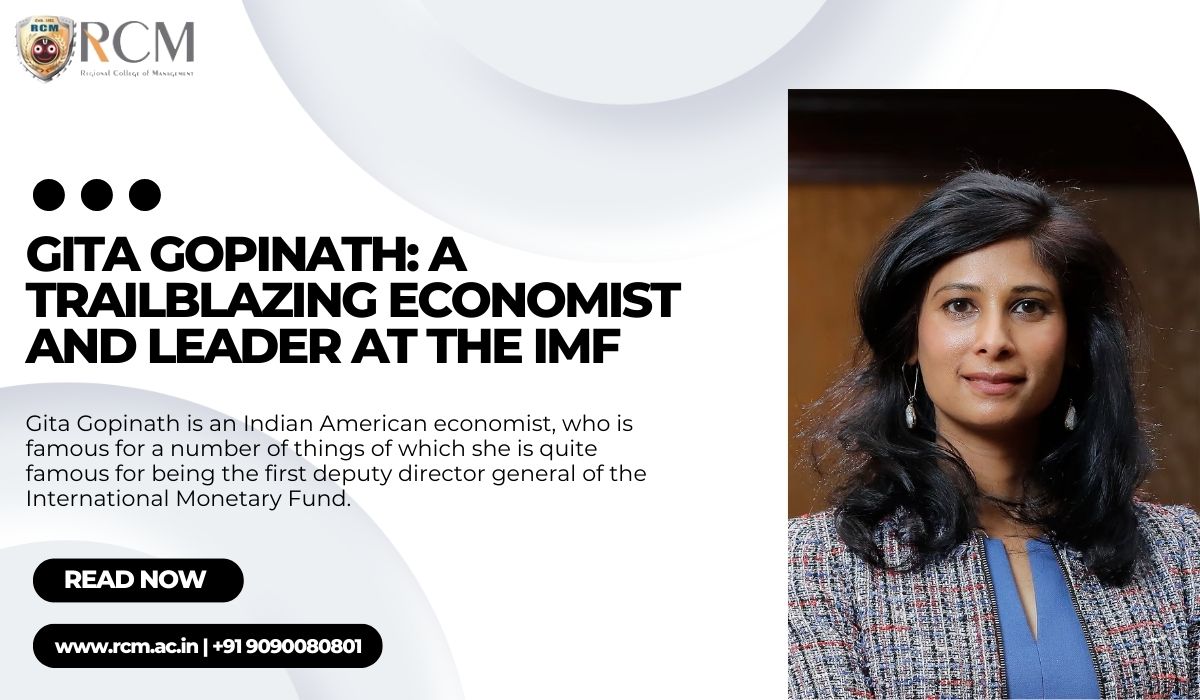




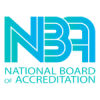




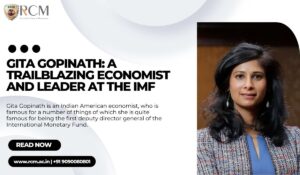






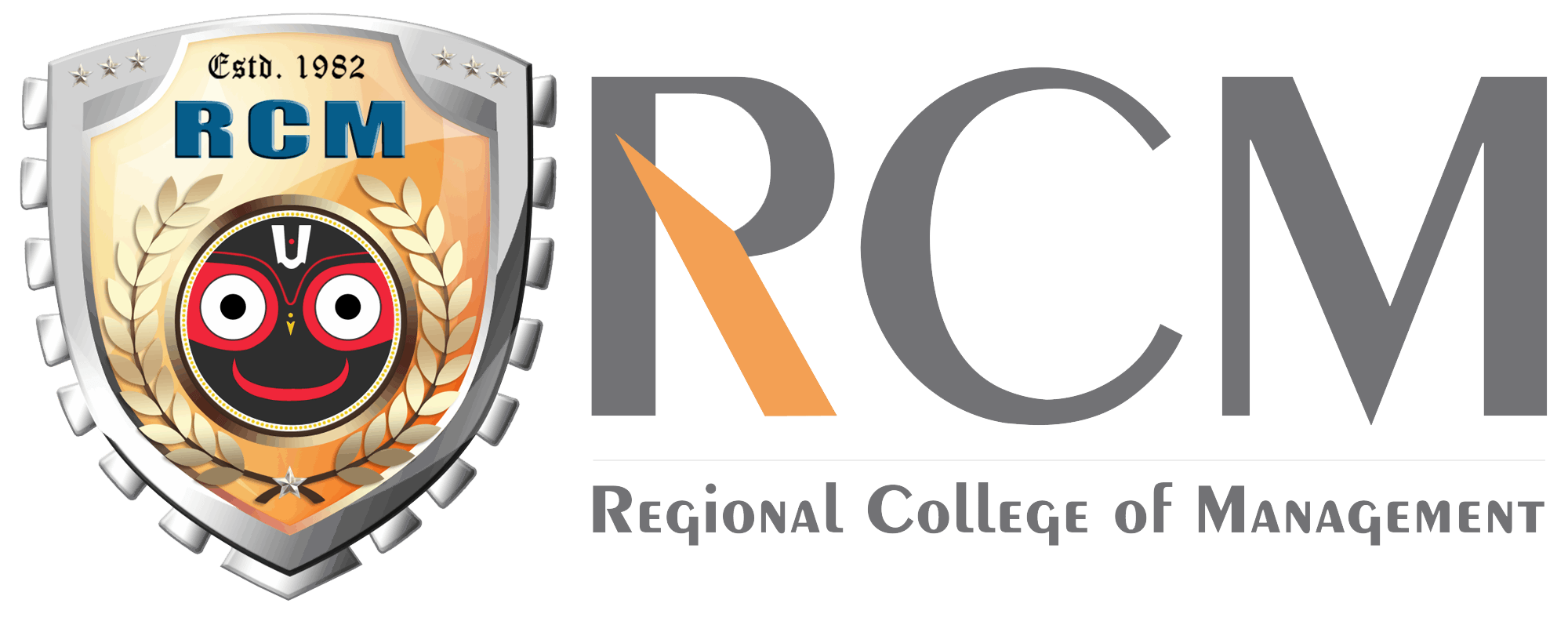
12 Comments
Hello my loved one I want to say that this post is amazing great written and include almost all significant infos I would like to look extra posts like this
I do not even know how I ended up here, but I thought this post was great. I do not know who you are but certainly you’re going to a famous blogger if you are not already 😉 Cheers!
Hey there You have done a fantastic job I will certainly digg it and personally recommend to my friends Im confident theyll be benefited from this site
Just wish to say your article is as surprising The clearness in your post is just cool and i could assume youre an expert on this subject Fine with your permission allow me to grab your RSS feed to keep updated with forthcoming post Thanks a million and please keep up the enjoyable work
Simply want to say your piece is as astonishing. The clearness in your post is just great and i could assume you are an expert on this topic Fine with your permission let me grasp your subscription to be up to date with imminent post Thanks a million and please keep up the rewarding job.
I loved you even more than you’ll say here. The picture is nice and your writing is stylish, but you read it quickly. I think you should give it another chance soon. I’ll likely do that again and again if you keep this walk safe.
I loved you even more than you’ll say here. The picture is nice and your writing is stylish, but you read it quickly. I think you should give it another chance soon. I’ll likely do that again and again if you keep this walk safe.
Wow superb blog layout How long have you been blogging for you make blogging look easy The overall look of your site is magnificent as well as the content
Hi,
I like your writing so much share we be in contact more approximately your article on AOL I need a specialist in this area to resolve my problem Maybe that is you Looking ahead to see you
Fantastic site. A lot of helpful info here. I’m sending it to some buddies ans additionally sharing in delicious. And naturally, thanks on your sweat!
I enjoy reading your posts regularly.
Very well presented. Every quote was awesome and thanks for sharing the content. Keep sharing and keep motivating others.